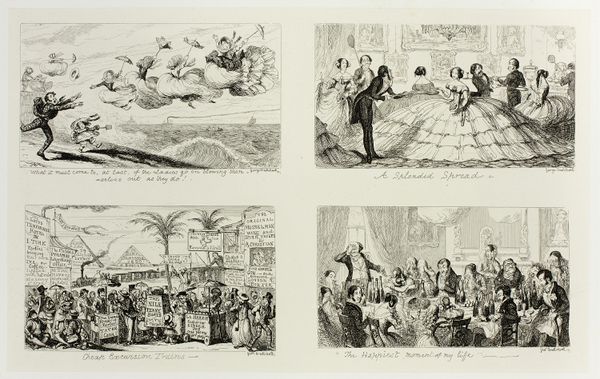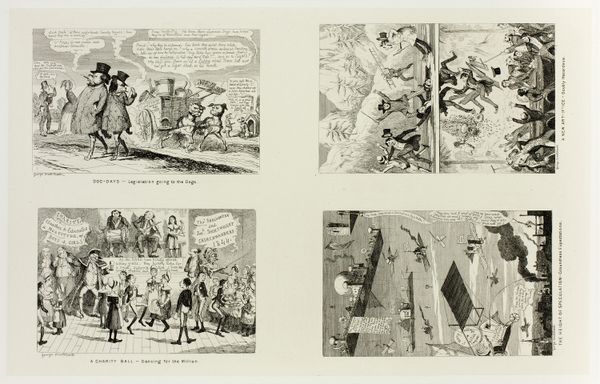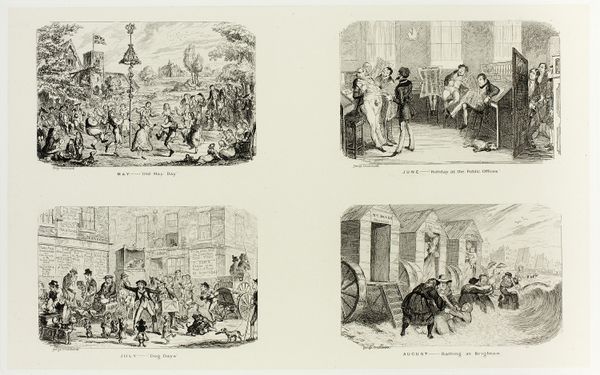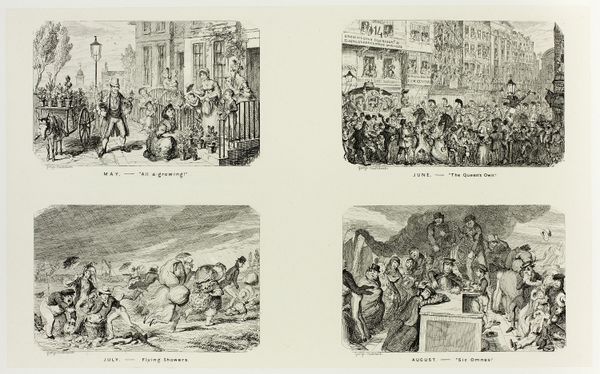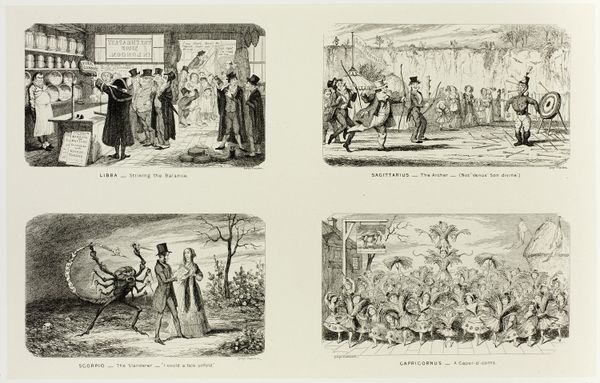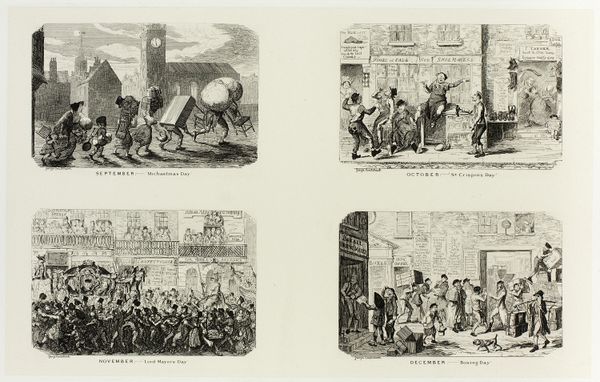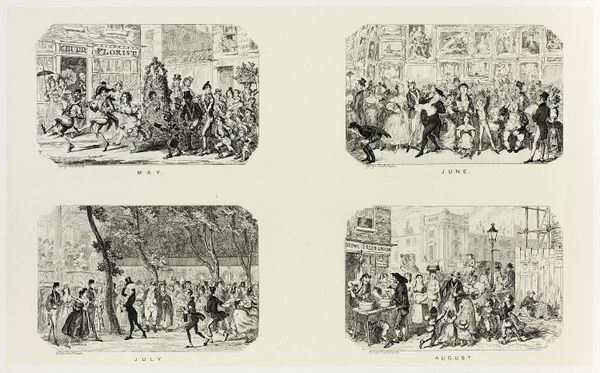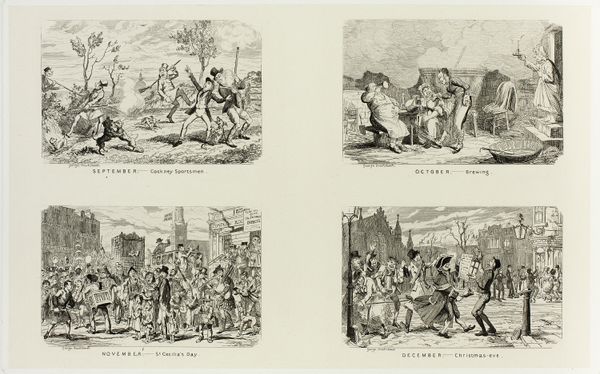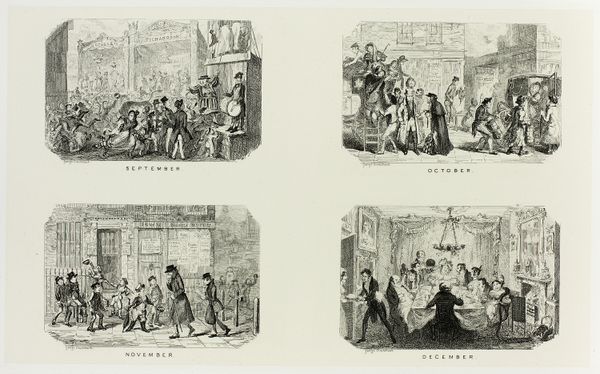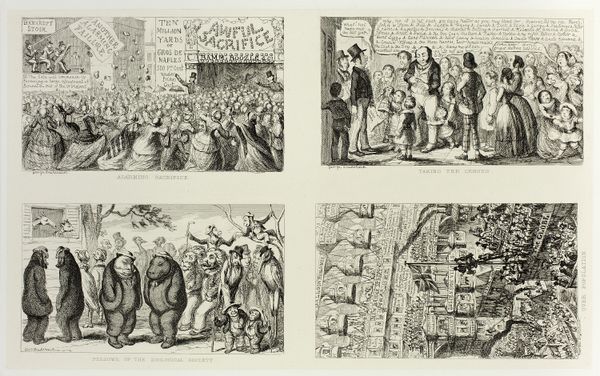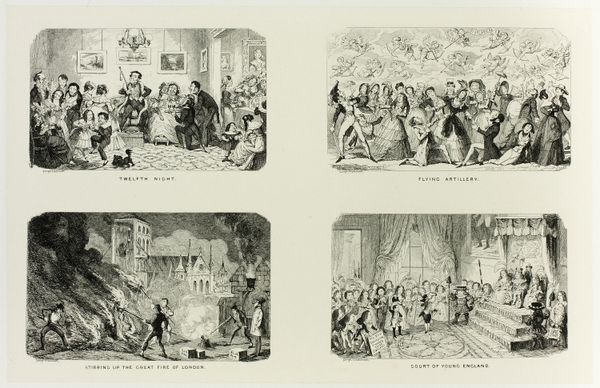
Advice "To Those About to Marry" - Buy Cheap Furniture from George Cruikshank's Steel Etchings to The Comic Almanacks: 1835-1853 (top left) c. 1852 - 1880
0:00
0:00
Dimensions: 211 × 342 mm (primary support); 341 × 506 mm (secondary support)
Copyright: Public Domain
Editor: So, this etching by George Cruikshank, titled "Advice 'To Those About to Marry' - Buy Cheap Furniture," from around the mid-19th century, it strikes me as incredibly cynical. The way he renders the domestic interior in the first panel... the clutter and dissatisfaction are almost palpable. What kind of statement do you think Cruikshank is making about marriage and consumerism here? Curator: That cynicism is key. Cruikshank was a social commentator. Consider the context: the rise of the middle class, increased consumerism, and anxieties about maintaining appearances. He's not just commenting on marriage; he's critiquing the societal pressures that dictate its success, pressures tied to material possessions. Note the detail in the "cheap furniture"—it's not about comfort, it's about *seeming* comfortable. Who is this image aimed towards, do you think? Editor: I imagine towards those very middle classes he's critiquing – to those aspiring to a lifestyle perhaps beyond their means. Almost like a warning about the pitfalls of chasing status through possessions. Curator: Exactly! And think about the publication context. These comic almanacs were widely circulated, reaching a broad audience. Cruikshank is using humor and caricature to make a sharp point about the societal expectations around marriage and domesticity. This wasn't simply entertainment; it was a form of political commentary accessible to the masses, challenging the values of the time. The image of cheap furniture becomes symbolic of a deeper societal critique. Do you see it as more than just a critique of marriage? Editor: I do now. It is about consumerism and social status, as a reflection on the political structure. Thank you, that was great to unpack! Curator: It’s always insightful to view art through a historical lens; understanding the context helps unlock its full meaning.
Comments
No comments
Be the first to comment and join the conversation on the ultimate creative platform.
